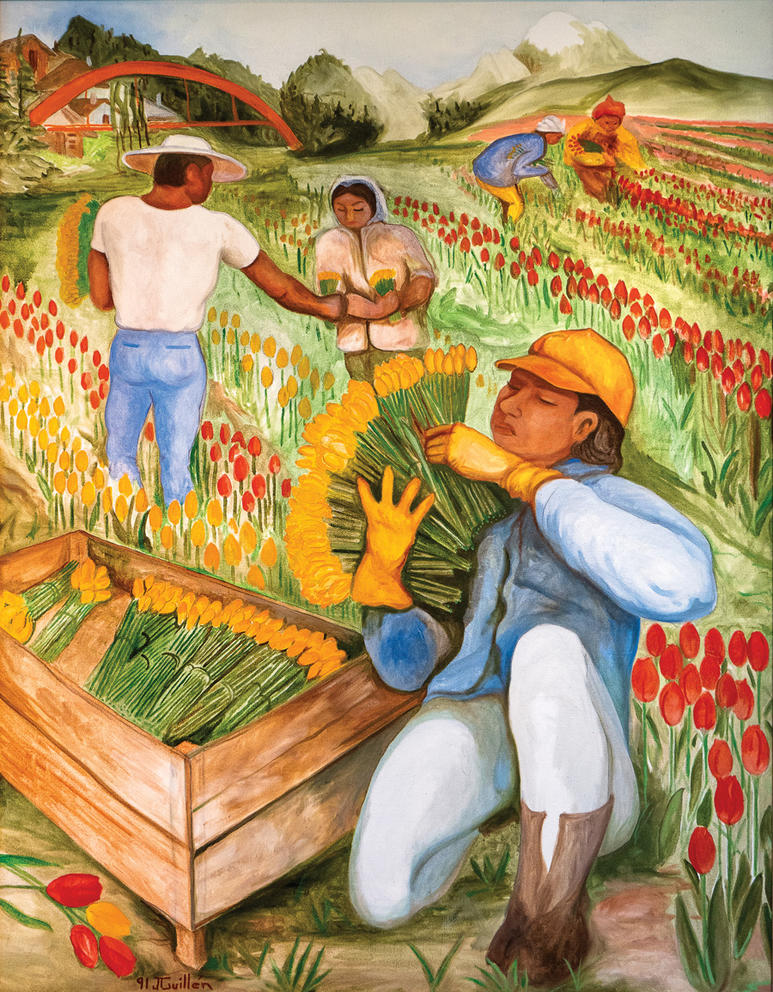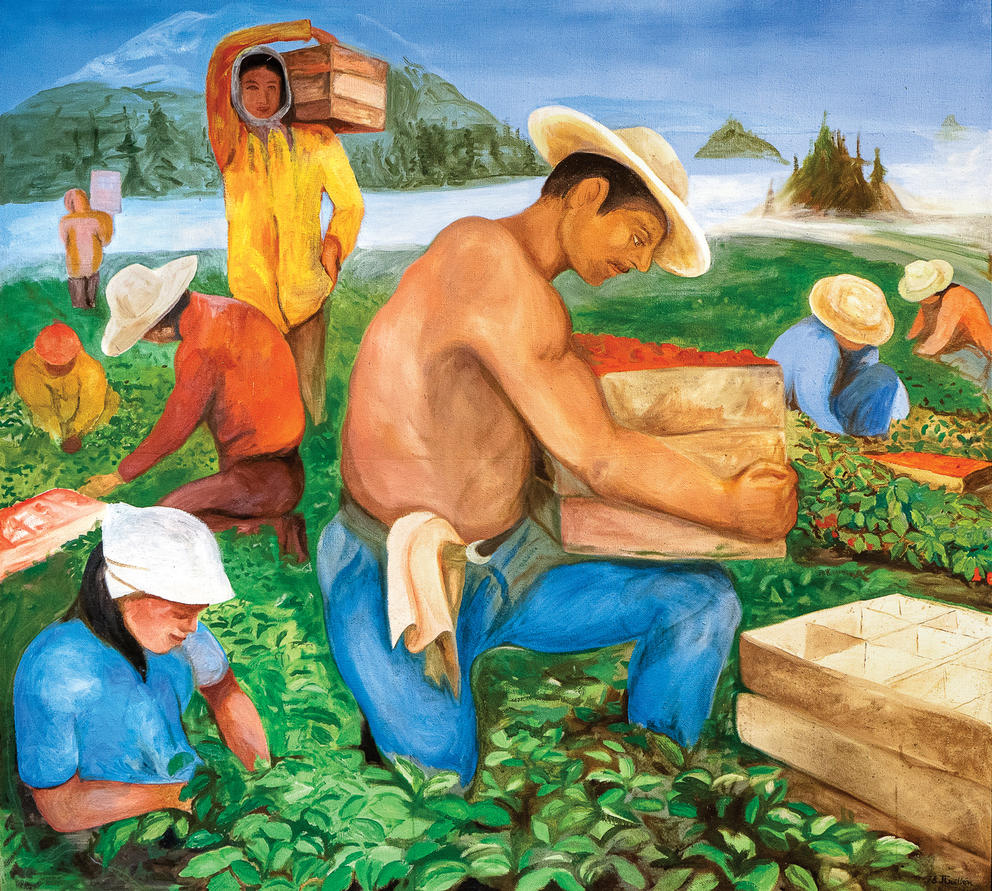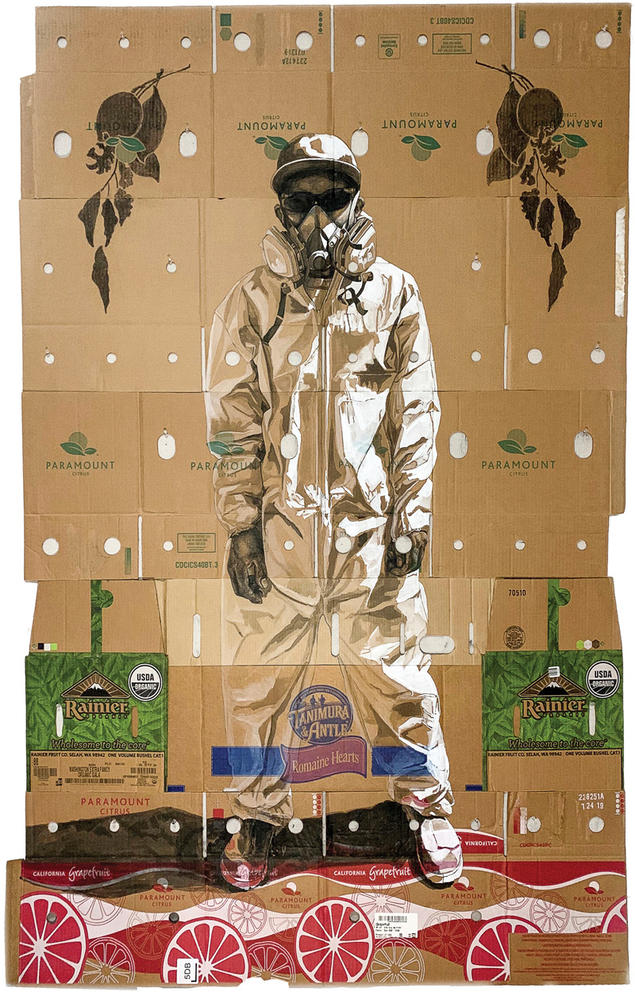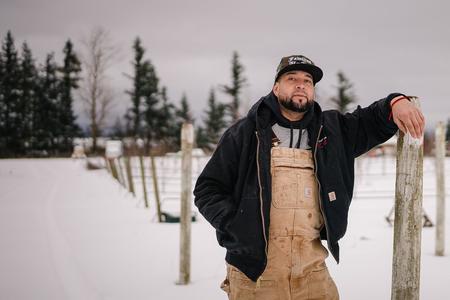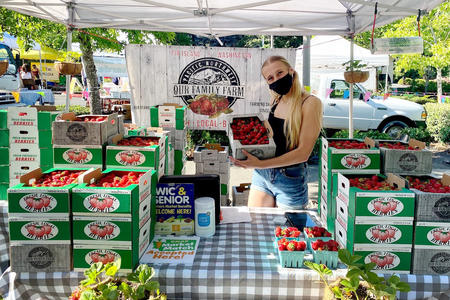Jesús’ daughter, Rosalinda Guillén, runs Community-to-Community Development in Bellingham, a 20-year-old grassroots organization focused on food justice and immigrant rights. The organization collects paintings, posters and other artwork created by farmworkers or their family members, including Rosalinda’s father’s work. They portray farmworkers in a myriad of ways: at times playful, serene, beautiful and almost transcendental. She calls this “artivism” — a way of resisting a system that prefers to see farmworkers as disposable and invisible. In making the varied and distinctive experiences of Latino and Latina farmworkers in Washington the subject of the art, the works celebrate both farm labor and the people who do it.
"My father, Jesús Guillén, was always painting. When he was home, most of his time was spent at his easel with his brushes, painting in his studio and, when he didn’t have a studio, he was in the house. He was always painting; that was his life. Painting farmworkers was what he did, and he would always tell us about the beauty of the work and that we as farmworkers didn’t even recognize it ourselves — that we didn’t recognize the beauty of what we were doing and the skill of it.
He would say that every part of your body when you’re working the land and doing this work is graceful. When I do social justice work for farmworker rights, that’s what I’m thinking about. When I decided to organize instead of focusing more on art, my father was very disappointed. I told him, ‘I’m going to paint a different canvas. I’m going to try to make your canvases real.’ That’s the influence. I wouldn’t have had the vision to do it if it hadn’t been for him painting it.”
—Rosalinda Guillén, farmworker advocate and executive director of Community-to-Community Development in Bellingham
“It all started when I was working in the field. I started to question the lifestyles of the farmworkers versus the lifestyle of the landowners or the ranchers. I started seeing and learning more about how, in the past, farmworkers were abused — how in the beginning the United States used Native Americans in the missions and then used slaves. In the U.S., agribusiness has always relied on disadvantaged communities, so they can make the most money out of it, and so they can grow.
“I’ve been collecting vintage labels from produce, and there’s always this beautiful scenery, with children or women or men. And there is no trace of how hard it is to produce the food and who the people are who are behind this produce. Even now, a lot, if not all, of the boxes that I’ve been collecting are pretty boxes — but there’s no trace of farmworkers.”
—Narsiso Martinez, mixed-media artist and former farmworker in Washington, Long Island, and California.
"I was drawn to agriculture and farmworkers from working here in Yakima as an art teacher. This is where I live, the nation’s fruit basket. You go anywhere here — five minutes north, south, east or west — and you see hop fields, you see apple farms. My students are the children of these farmworkers.
“I noticed that there was a lack of illustrations or representations of these migrant workers, not only in gallery spaces, but also in institutions. As a teacher taking students to art galleries, it was really important for them to see themselves reflected and their family and cultures illustrated. I just want these kids to see their background appreciated and valued.”
—Christie Tirado, Mexican American artist and elementary school art teacher in the Yakima Valley.
"I use my own memories from when I was a child migrant worker to create my paintings. I did not have to work as long and hard as my older siblings, and maybe this is why I see so much beauty in field work. It was tough, dirty work, and many, many times I cried when I had to leave my warm bed at 4 a.m. to go out into the freezing morning. There were times when I was so tired that I could barely lift my arms and legs, my boots caked with mud, and an airplane or helicopter would dump pesticides on the field with no regard to us.
“Despite those things, there was always something so beautiful about working with your family, your friends, your people and with nature. I loved the smell of the earth, and there were so many sounds: crickets, frogs and all kinds of birds. It was beautiful. I remember, as a little girl, I would look out at the fields and take mental pictures. I would think to myself, ‘I don’t know how, but I will use this one day.’ ”
—Consuelo Soto Murphy, painter and former farmworker, Richland
This portfolio was compiled in collaboration with ArtsWA/the Washington State Arts Commission, Community-to-Community Development, Charlie James Gallery and the individual artists and their families.
Reporting for this story was supported by the Society of Environmental Journalists.
This story was first published in High Country News on Feb. 1, 2022.
Get the latest in local arts and culture
This weekly newsletter brings arts news and cultural events straight to your inbox.


